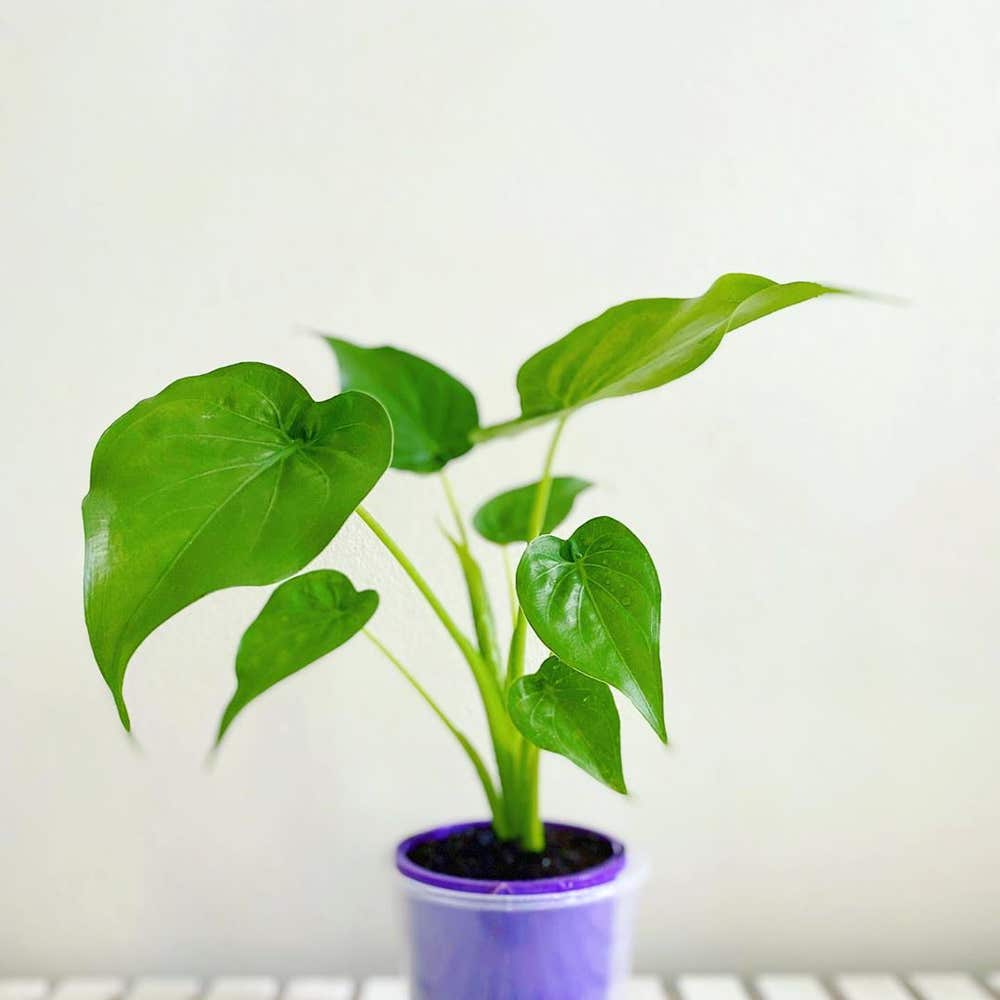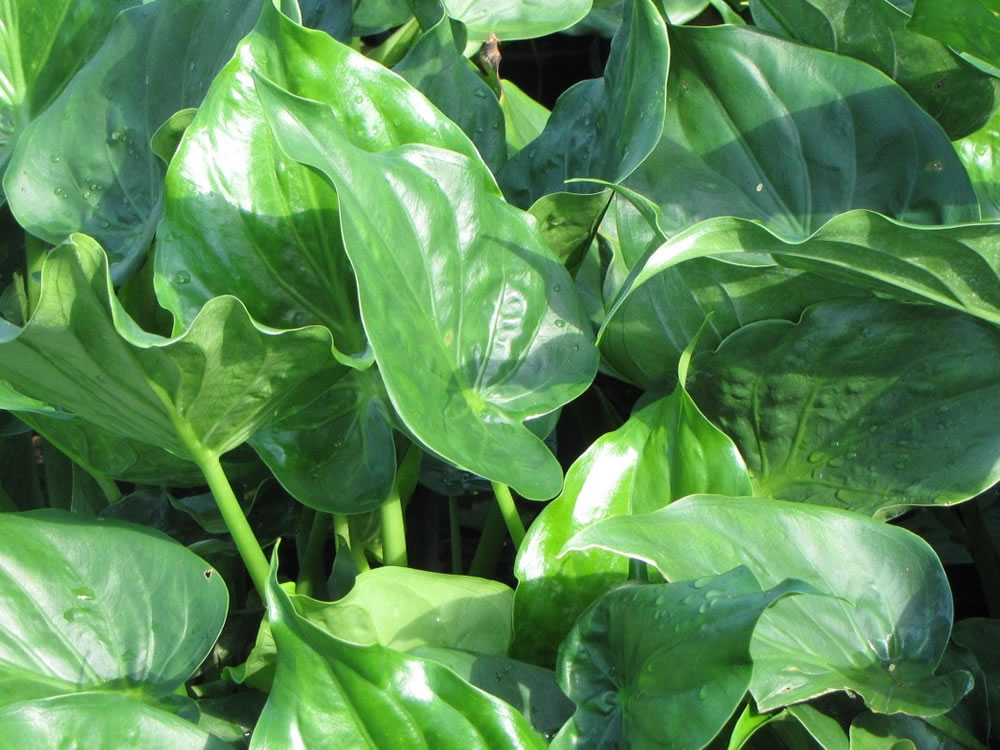
Chinese Taro Growth In Water (Alocasia Cucullata) Stock Photo 207100963
25 November 2019 Alocasia cucullata (Chinese taro) Author: J Rojas-Sandoval Authors Info & Affiliations Publication: CABI Compendium https://doi.org/10.1079/cabicompendium.37019438 Datasheet Type: Invasive species Abstract

Online Plant Guide Alocasia cucullata / Chinese Taro
Taro is among the most widely grown species in the group of tropical perennial plants that are referred to as "elephant ears" when grown as ornamental plants. [27] In the Philippines, the whole plant is usually referred to as gabi, while the corm is called taro.

Alocasia cucullata (Chinese taro) CABI Compendium
The Alocasia Cucullata, also called the Chinese Taro or Buddha's Hand, is a unique tropical plant treasured for its charming heart-shaped leaves. This green beauty is native to Southeast Asia and offers a decorative addition to any indoor or outdoor space. This article provides complete information on its profile, care guide, and special features.

Taro 'Chinese Bun Long' (Colocasia esculenta) Taro plant, Taro
Also known as the Chinese taro, buddha's hand, Chinese ape and hooded dwarf elephant ear. The Alocasia Cucullata is native to the tropical forests of Southeast Asia. LIGHTING Alocasia Cucullata prefers bright but indirect light. Keep Cucu out of any direct sunlight which will cause Cucu's foliage to burn and wilt. Place Cucu a metre away from an east or west-facing window or near a north.

PlantFiles Pictures Hooded Dwarf Elephant Ear, Chinese Taro, Buddha's
Taro-also called Dasheen-is a perennial tropical or subtropical plant commonly grown for its starchy but sweet flavored tuber. Taro is always served cooked, not raw. The taro tuber is cooked like a potato, has a doughy texture, and can be used to make flour. Young taro leaves and stems can be eaten after boiling twice to remove the acrid flavor.

PlantFiles Pictures Hooded Dwarf Elephant Ear, Chinese Taro, Buddha's
Taro plants are herbaceous perennials with large heart-shaped leaves arising from the base of their underground stem or corm. The corm can weigh up to 9 lbs (4 kg), depending on the variety. It produces leafy stalks that can reach lengths of 6 ft (1.8 m), with each leaf measuring up to 18 in (45 cm) long and 12 in (30 cm) wide.

Chinese Taro Plant Care Water, Light, Nutrients Greg App 🌱
Offshoots are separated from the main plant when they are at least 15cm in height. By chopping the dark top section of the taro tuber into small pieces. Leave for a day to allow surfaces to dry and replant. Taro needs consistent irrigation and a well-drained rich soil with plenty of organic matter, so don't skimp on the mulch, and be prepared.

Taro Plant, Chinese Bun Long Sow Exotic
Chinese taro is native to Southeast Asia and grown in different areas in India, Thailand, China and Burma. Alocasia Cucullata is also famous with other names such as, Buddha's hand, Chinese Ape, Chinese Taro, and Hooded Dwarf Elephant ear. Although it originated from Southeast Asia, this perennial plant is available worldwide now. Growth

chinese taro Encyclopedia of Life
The Complex Taro Leaf The Chinese taro plant offers two sources of vitamins and minerals. The heart-shaped green leaves growing above ground are often used to wrap other foods as well and sometimes steamed to serve as a green vegetable.

Chinese Taro / Buddha's hand care and guide YouTube
The chinese taro plant is native to regions that experience a tropical climate, thus it requires a warm and humid environment to thrive. Its preferred temperature range fluctuates between 68 to 100 ℉ (20 to 38 ℃), with an optimal temperature of around 82 ℉ (28 ℃). In cooler temperatures, the plant may become dormant, whereas excessive.

Chinese Taro grow and care tips...05/07/2020 YouTube
Kitazawa Seeds proudly continues to offer the highest quality Asian seeds to delight the diverse palates of our customers. We offer over 500 seed varieties that produce traditional heirloom Asian vegetables, popularly found in farmers' markets, specialty grocery stores and restaurants. Now you can grow them in your kitchen garden, sell them at.

PlantFiles Pictures Alocasia Species, Hooded, Dwarf Elephant Ear
Chinese taro (Alocasia cucullata) Care Guide. Alocasia cucullata boasts large, glossy, heart-shaped leaves. The species is fairly low-maintenance, and so it has become a popular ornamental, especially in wet, warm places. Thought to originally hail from Southeast Asia, the plant is now found across much of the world's tropics.

Pengzhou, China Field of Taro Plants Stock Photo Image of taro, crop
Alocasia cucullata is a species of flowering plant in the arum family known by the common names Chinese taro, Chinese ape, Buddha's hand, and hooded dwarf elephant ear. It is kept as an ornamental plant .

Chinese Taro Skool4Kidz Preschool & Infant Care
Ornamental plant Chinese Taro is also known as Alocasia Cucullata,Hooded dwarf elephant ear.Other plants of Alocasia family also shown in video. All of these.

Chinese Taro Black Olive East Nursery
every 9 days Chinese Taro needs 0.8 cups of water every 9 days when it doesn't get direct sunlight and is potted in a 5.0" pot. Use our water calculator to personalize watering recommendations to your environment or download Greg for more advanced recommendations for all of your plants. Water 0.8 cups every 9 days

Alocasia cucullata(Chinese Taro) Richard Lyons Nursery, Inc.
Nov 10 2021 Plants of Alocasia Cucullata (Chinese Taro) are shorter than dripping Cucullata. They are suitable for potted planting with green leaves, upright roots and clustered plants. They are dwarfed by dripping Guanyin. So how to grow the Alocasia Cucullata? What good method to care for Alocasia Cucullata?